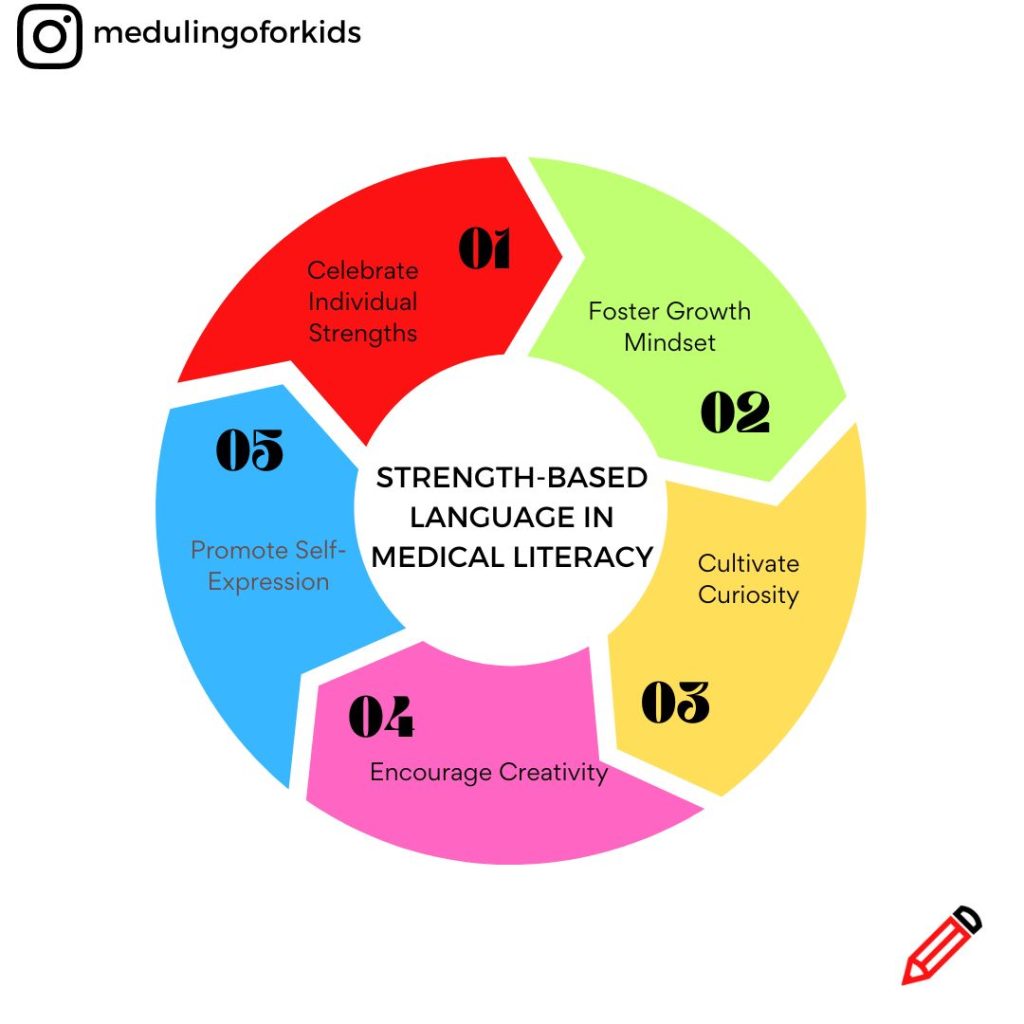In the ever-evolving landscape of healthcare and education, the power of language cannot be understated. Language serves as a conduit for understanding, expression, and empowerment, particularly within the realm of medical literacy education. As educators seek to equip students with the knowledge and skills necessary to navigate complex health information, the integration of strength-based language emerges as a transformative approach to fostering comprehension, confidence, and creativity. This article explores how strength-based language in medical literacy education can be harnessed, empowering students to engage critically with healthcare discourse while encouraging them to experiment and innovate with language.

1. Celebrating Individual Strengths and Contributions:
Strength-based language in medical literacy education celebrates the diverse strengths, talents, and experiences of students. Rather than focusing solely on deficits or areas of improvement, educators emphasize the unique contributions that each student brings to the learning environment. By recognizing and affirming students’ individual strengths—whether it be critical thinking skills, empathy, or communication abilities—educators cultivate a culture of inclusion and appreciation that empowers students to actively participate in their learning journey.
2. Fostering a Growth Mindset:
Central to the ethos of strength-based language is the cultivation of a growth mindset—the belief that abilities can be developed and nurtured through effort and perseverance. In medical literacy education, strength-based language encourages students to approach challenges with curiosity and optimism, viewing setbacks as opportunities for growth and learning. By reframing obstacles as temporary setbacks rather than insurmountable barriers, students are empowered to embrace the iterative process of learning and discovery inherent in STEM.
3. Cultivating Curiosity and Inquiry:
Strength-based language invites students to engage critically with healthcare discourse, interrogating assumptions, challenging prevailing narratives, and advocating for evidence-based practices. Through open-ended questions, collaborative discussions, and experiential learning activities, educators encourage students to explore complex healthcare topics from multiple perspectives, fostering a deeper understanding of the nuances inherent in medical literacy. By embracing curiosity and inquiry, students develop the critical thinking skills necessary to navigate the complexities of healthcare information and make informed decisions.
4. Encouraging Creativity and Innovation:
Medical literacy education provides a fertile ground for students to experiment and innovate with language, harnessing the power of words to communicate, connect, and inspire change. Strength-based language invites students to explore creative approaches to healthcare communication, whether through storytelling, visual representation, or multimedia presentations. By encouraging students to infuse their unique voices and perspectives into their healthcare narratives, educators foster a culture of creativity and innovation that empowers students to become effective communicators and advocates for health equity.
5. Promoting Self-Expression and Empowerment:
At its core, strength-based language in medical literacy education is about empowering students to find their voice, express their ideas, and advocate for health needs. By providing opportunities for self-expression, reflection, and advocacy, educators empower students to take ownership of their medical literacy journey and become active participants in the healthcare decision-making process. Through authentic, student-centered learning experiences, students develop the confidence and agency to navigate healthcare systems, engage with healthcare providers, and make informed choices on matters of health.
Embrace Strength-Based Language in Medical Literacy Education
In conclusion, strength-based language serves as a cornerstone of effective medical literacy education, empowering students to engage critically with healthcare discourse while fostering creativity, curiosity, and self-expression. By embracing the principles of strength-based language, and using resources like Strength-Based Language for Medical Educators, instructors create inclusive and empowering learning environments where every student’s voice is valued and respected. As students navigate the complexities of healthcare information, strength-based language provides a transformative framework for fostering comprehension, confidence, and empowerment—a testament to the profound impact of language in shaping the future of healthcare and education.
===
Interested in teaching medical literacy pain free? Shop medical literacy resources!

This article was drafted by ChatGPT and edited by Joan Lee Tu, the founder of MedULingo.com.
You may also be interested in the following:
Strength-Based Feedback for Writing Assignments: An Assessment for Educators
Strength-Based Language for Medical Educators
50 Strength-Word Coloring Sheets – FREE DOWNLOAD
9 Strength-Based Reframes for Neurodivergent Learners – FREE DOWNLOAD
The Role of Strength-Based Language in Medical Literacy Education
The Case for Change: Concerning Aspects of Deficit-Based Language in Education
Strength-Based Language: Empowering STEM Learners
Strength-Based Language: Empowering Narratives in STEM Education

